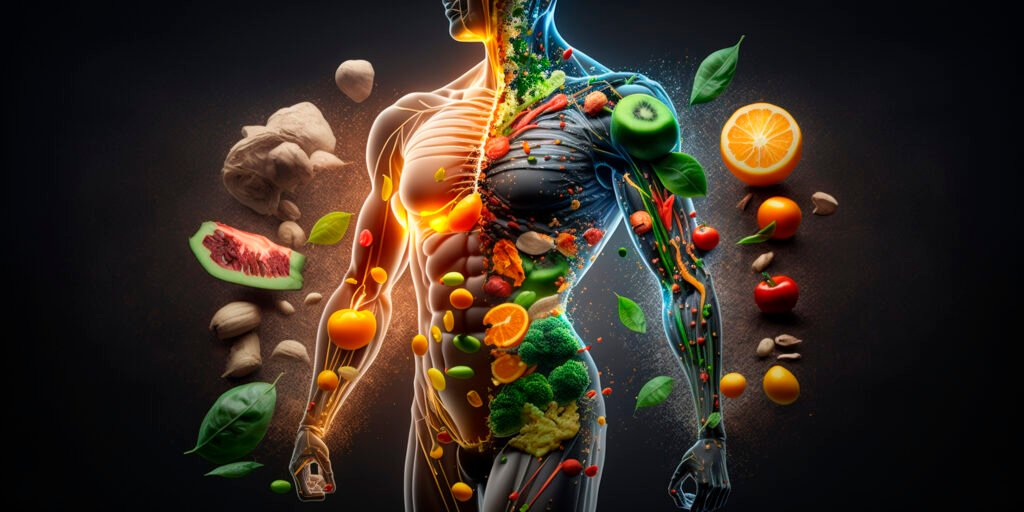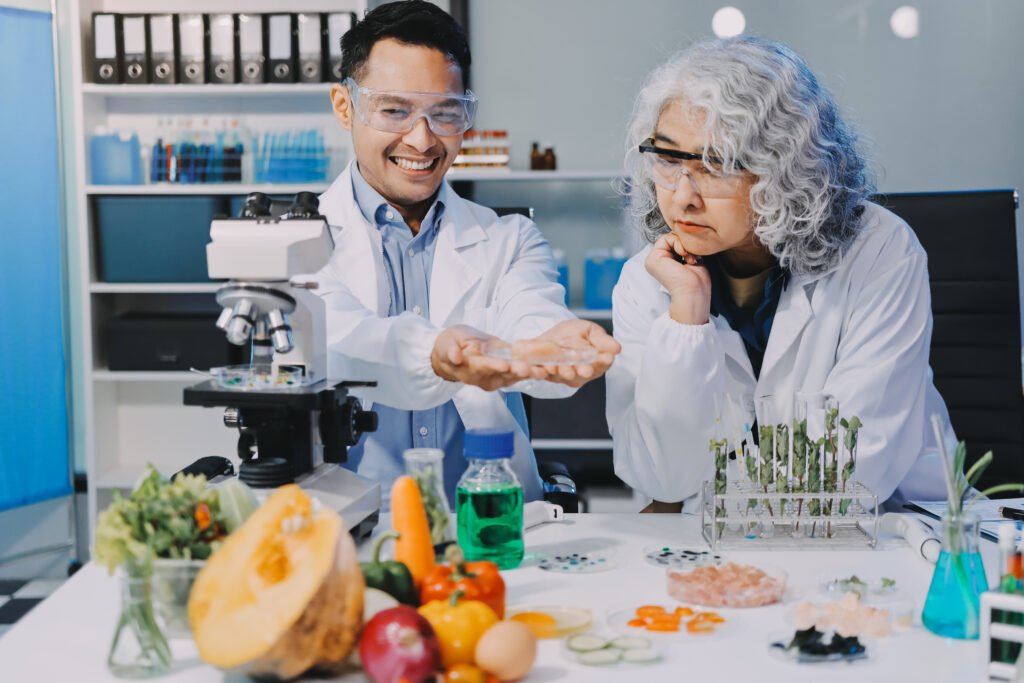Table of Contents
Introduction of Nutrition & Wellness Trends
With the advancements in science, technology, and increasing demands for personalized health solutions, nutrition and wellness trends have undergone rapid changes in 2025. From plant-based innovations to AI fitness tracking, the wellness world is studded with promises, but which of these trends are really worth it-your time and money? This post discusses the foremost nutrition and wellness trends, comparing them across relevant areas such as effectiveness, safety, and cost, among many others-as an update and supplementation so you can be informed in making better and healthier decisions.
Nutrition and wellness trends are evolving to become even faster in 2025 and, by the very definition, encroached upon by advances in science, technology, and highest demands of all plausible segments into personalized health. From plant-based innovations to AI fitness-tracking devices, wellness is filled with promises, but which of these trends really promote the good life and which are just an expense-to time and money? This post describes the hottest nutrition and wellness trends for you, while also comparing them in the relevant areas of effectiveness, safety, cost, and more-so that you are informed and be able to make better, healthier choices.
🧩 What Are Nutrition & Wellness Trends?

Nutrition & Wellness Trends mean current innovations, habits, products, and practices people take to enhance their health both physically and psychologically. Such trends usually involve:
Emerging diets or eating patterns (plant-based, intermittent fasting, focusing on gut health)
Functional foods & nutritional supplements (probiotics, adaptogens, nootropics)
Fitness & recovery regimes (wearables, cold plunge, recovery tech)
Holistic wellness (mindfulness, sleep optimization, mental health tools)
Technology-led health solutions (AI coaching, personalized nutrition app)
Health is Global Priority The pandemic made everyone more conscious and intentional about what they eat, how they move, and how they feel. Wellness has come back to what most people would consider mainstream. Mind-numbing choices From TikTok fads to scientific developments, there is so much out there. People need to be told what actually works.
Powered by Innovation New research, consumer demand, and technology are a constantly changing society around trends in this space, and thus it matters for an updated use. The Huge Growth of the Market: The global wellness market has an estimated worth of more than 4.5 trillion dollars, and nutrition is part of the blueprints. Everyone, from start-ups to big brands, is competing in this space.
People aspire for Personalization Consumers want induction via a data-infused end-to-end DNA and AI-based individualized nutrition-and-wellness plans for all, instead of an ordinary fit-for-all one-size-fits-all solution.
Effectiveness & Proven Benefits of Nutrition & Wellness Trends

Concerning Nutrition & Wellness Trends, the most critical question for most people is: Does it really work? They become popular-based trends influencers, social media buzz, but they do not always reflect true science or yield tangible results.
- Evidence-Informed Compared With Trend-Informed
Some wellness phenomena have a basis in serious research-for example, plant-based diets, which have been tied to better heart health and cholesterol control, along with improved weight management. Other phenomena, such as detox teas or severe cleanses, typically lack the scientific support and tend to yield little more than short-term results.
Scientific Backing & Research-Based Evidence of Nutrition & Wellness Trends

When it comes to Nutrition & Wellness Trends, we need to discern scientifically supported ones from those based on anecdotal evidence or marketing claims. Trends that get solid science probably stand a much better chance of providing measurable results and long-term benefits.
- Role of Clinical Trials in Wellness
For a trend to earn its scientific cred, it must be supported by clinical trials or peer-reviewed studies. Researchers run these studies to establish controlled environments, ensuring accurate results. If a research is examining either aspects of a new supplement or advantages of a diet, such evidence implies that the trend should relate to practical changes in health and wellness.
Some key Nutrition & Wellness Trends back the research: Mediterranean Diet: Quite a few studies have shown the positive effects of the Mediterranean diet on heart health, longevity, and weight management, including ones by the American Heart Association.
Plant-Based Diets: Evidence shows that plant-based eating may lower the risk of chronic conditions such as type 2 diabetes, hypertension, or cancer.
Mindfulness and Meditation: Studies published in the Journal of Clinical Psychology indicate that mindfulness can effectively reduce stress and improve mental clarity.
The Importance of Peer-Reviewed Studies
It’s one of the best ways to determine whether a nutrition and wellness trend is a fad or fact, to see if any articles have been published on it concerning peer-reviewed journals. Such journals keep studies in scrutiny by qualified experts in a particular field, keeping the results authenticated and substantial.
An example would show American Journal of Clinical Nutrition and The Lancet articles as more trustworthy than a blog post or social media testimonial. Scientific verification stands best.
Safety & Side Effects of Nutrition & Wellness Trends

Nutrition and Wellness Trends have great potential benefits, but they need evaluation for safety before plunging in. Not all trends fit everyone, and some may have side effects that would cause harm to an individual if used wrongly or inappropriately.
- A good understanding of the risks
Even if a certain trend is really in, that doesn’t guarantee its safety. The wellness products, the diets, or the fitness routine cannot be applicable to most individuals, especially those having health conditions. For example, a high-protein diet could be an answer to someone who wants to reduce weight, but this might be a risky undertaking for those with kidney problems. Just like extreme forms of practice such as fasting are not for everybody, there are some who have disorders linked to diet or diabetes who may not be able to safely undergo such methods.
Common Side Effects of Popular Trenda
Some Nutrition & Wellness Trends are able to bring unwanted side effects. Examples include:
Intermittent Fasting: In the early part of using intermittent fasting, its positive effect on weight loss might be offset by headaches, irritability, or even fatigue. It would not be good for low blood sugar or pregnant individuals either.
Supplements Many wellness trends use supplements, such as vitamin D, CBD oil, or protein powders. Often, overuse leads to some of these supplements resulting in digestive problems, liver damage, and sometimes toxicity. It is always best to have that discussed with a healthcare professional before taking any new supplement regimen.
Detox Diets: Some detoxes guarantee quick weight loss; however, dehydration, nausea, or fatigue might follow because of fast calorie deprivation and some cleansing ingredients.
Consulting the Professionals
By far, the best way to ensure that every Nutrition & Wellness Trend is safe is through consultation with a health professional like a registered dietitian, nutritionist, or doctor. They give you the best practices tailored to your own situation so that it is not only safe but also effective. An example would be that of helping someone set up an intermittent fasting schedule that works on her lifestyle and does not lead to negative side effects.
Cost & Affordability of Nutrition & Wellness Trends

Considering any Nutrition & Wellness Trend, one of the prime factors the consumer seems to evaluate is cost. The costs associated with various trends can be very affordable for a consumer, whereas some trends may suck up their budget. Therefore, knowing the costs affixed to each trend is indeed useful when trying to gauge whether it would fit your lifestyle and budget.
- Price Range for Some of the Best-Known Wellness Trends
The price of wellness trends varies for each depending on the kind of product or service or program involved. Typical examples of trends are as follows:
Diet Plans: Meal delivery services and personalized nutrition plans may cost hundreds of dollars per month, but for every trend that has become expensive there is always one that is free or cheap-such as public meal plans or apps to track nutrition for free.
Supplements: Protein powders or Multivitamins are products often purchased in varying ranges of $10 to $100 a month in terms of their price. Moreover, some premium supplements would have special synergistic ingredients that would somewhat justify the price. Then again, you should ask if that price actually does give you other benefits.
Fitness Programs: Developments in fitness such as online workout programs or gym memberships often cost $10/month for app-based services and more than $100/month for boutique fitness classes or personal training.
Wearables & Tech: Advanced wellness technology such as fitness trackers or smart scales cost anywhere between $50 and $500 and upwards depending on the features. These devices that can offer health data specific to the user may be beyond the budget of many.
Affordable Trends That Have Marketing Power
Not every Nutrition & Wellness Trend needs to break the bank. In fact, some of the best trends are quite cheap:
Mindfulness Practices: Meditation mobile apps, such as Headspace or Calm, can generally be downloaded for free or a low subscription fee. Yoga can also be practiced at home with free online videos, or for an affordable price in community centers.
Home Workouts: Just using body weight for squats, push-ups, or yoga poses do not require any gym membership or fancy equipment. Free fitness routines are available on tons of apps and YouTube channels.
Whole Food Nutrition: Any diet based on plant foods or whole foods will more than likely be cheaper than substantially processed foods or fad diets. Buying fresh vegetables, legumes, and grains in bulk will save you plenty of money in the long run.
Sustainability & Environmental Impact of Nutrition & Wellness Trends

Those who are gradually awakening to their environmental footprints are finding sustainability a pertinent issue in Nutrition & Wellness Trends. Many trends, especially those involving food and fitness, can have positive and negative environmental impacts. It is essential to understand these paramount microcosms for making the most eco-friendly choice without compromising health.
- Plant-Based Diets: Good for You, Good for the Planet
An increasingly popular Nutrition & Wellness Trend within the past few years, the plant-based diet promotes consumption of vegetables, pulses, cereals, and plant protein sources. In addition to imparting substantial cardiovascular and weight-loss benefits, plant foods, when compared to animal foods, are as a rule less harmful to the environment.
Lower Carbon Footprint: Plant-based foods typically involve less water, land, and greenhouse gas emissions than are involved in meat and dairy farming.
Sustainable Sourcing: Quite a few plant-based companies are focusing on sustainable ingredients and sustainable sources, organic farming, and regenerative practices.
Environmental Impact of Supplements
These wellness trends include supplements ranging from protein powders to vitamins. However, on their way to being packaged, they can contribute to unacceptable waste. For example, single-use plastic containers contribute to the plastic pollution problem while ingredients like fish oil are sourced to the detriment of marine ecosystems.
If you’d like to help change the status quo, consider making the switch to:
Bulk with less packaging
Plant-based or sustainably-sourced supplements
Brands using compostable or recyclable packaging
Ease of Use & Accessibility of Nutrition & Wellness Trends

Sustainability for Nutrition & Wellness Trends really lies in the ease of application and accessibility. There’s no use of a trend that does good if you can’t jive with it in terms of daily application; that’s why people often easily dissuade themselves from implementing it. We’ll look into the role of simplicity and accessibility in deciding trends that are successful.
- Simplicity in Diets and Meal Plans
Plant-based dieting, for example, is one of today’s nutrition countries that is easy to practice along with a multitude of availability on the internet to facilitate: online meal-planning apps, grocery delivery services, and quick recipes. Accessible feature for individuals with different cooking skills.
On the other hand, some types of nutrition trends, including the keto and paleo diets, require a little more extensive meal preparation or learning before juniors can understand what they mean. The very main thing is to determine whether it is something you will really be able to keep up with without being made crazy by incredibly difficult recipes or impossible-to-find ingredients.
Availability of Resources
Alone nutrition and wellness trends can be good, but this is highly dependent on where one is situated. Much can hinge on the availability of certain local foods which have a drastic bearing on how much easier one might find plant-based or a sustainable diet so easy, really, for people from urban areas to find specialty stores, while very hard for rural residents to locate specific ingredients at all.
Instead, it makes it possible for open-the-gate networks, such as online wellness programs-fitness apps, meal planners, even virtual therapy and wellness coaching-to disperse accessibility to wellness trends regardless of where a person is located. Since most of such programs are free or come at very affordable rates, wellness becomes available for a wide range of incomes.
Pros & Cons of Nutrition & Wellness Trends

✅ Pros
For Better Health
Many Nutrition & Wellness Trends help improve physical and mental health—nutrition-wise, exercise-wise, mindfulness-wise, and more.
Increased Awareness
Trends can increase awareness of what people eat, how they move, and how they feel, thus leading to smarter and more mindful choices.
Access to Innovation
Emerging trends themselves prompt a plethora of tools, techniques, and technologies that allow for an increasingly personal and effective approach towards wellness (think AI-based meal planning, wearable fitness trackers).
Community Support
Most wellness trends have forums, communities, or social media groups established therein—thus offering encouragement, accountability, and collective learning.
More Options Than Ever
Whether plant-based diets or mental health apps, endless styles of approaches exist so people can find the trends that fulfill their individual needs and lifestyles.
❌ Cons
Most nutrition and wellness trends are marketed, not scientifically proven, and may not show any real benefit-or, in fact, may even be harmful if misused.
Costly
Some premium diets, fitness gadgets, and supplements are priced so that working-class individuals may not be able to follow such trends.
An Overload of Choices
The abundance of trends creates difficulty in choosing just one to stick to and chasing some short-term results instead of building long-lived habits.
Possible Side Effects
Some trends could be damaging if the dieting or exercising is not done in a good way-resulting in fatigue, nutrient deficiencies, or other health issues.
Not One-Size-Fits-All
One person’s treatment would be another’s undoing. Access, underlying health conditions, and lifestyle would dictate the working effectiveness of some trend.
Conclusion: Choosing the Right Nutrition & Wellness Trends for You
Here’s an AI-like text turned into a human-like one:
Keep yourself up to speed in Nutrition & Wellness Trends to survive in this-day-and-age where new health crazes erupt almost every other day. Although some trends have evidence and train a long-term program for realistic advantages, others tend to whirl into various forms of ‘hype’ without any energy behind it.
What is important is to find something that really works, something sustainable and that can be personalized to suit your needs. Trends must be science-based, lifestyle-appropriate, and safe to follow regardless of whether they be plant-based eating, wearable fitness technology, or mindful meditation. The best wellness journey suits what you want vs what is realistic.
It is not about jumping on every new trend; it is about finding what works for you as you explore new ways of improving your health and well-being.
Stay curious. Stay informed. Choose wellness with intention.
Should I add a CTA at the end prompting users to subscribe, comment, or share this post? Or would you like the conclusion tailored specifically for a single audience?




Путешествуйте стильно и необычно.
Екзотични почивки 2025 https://www.ekzotichni-pochivki.com .